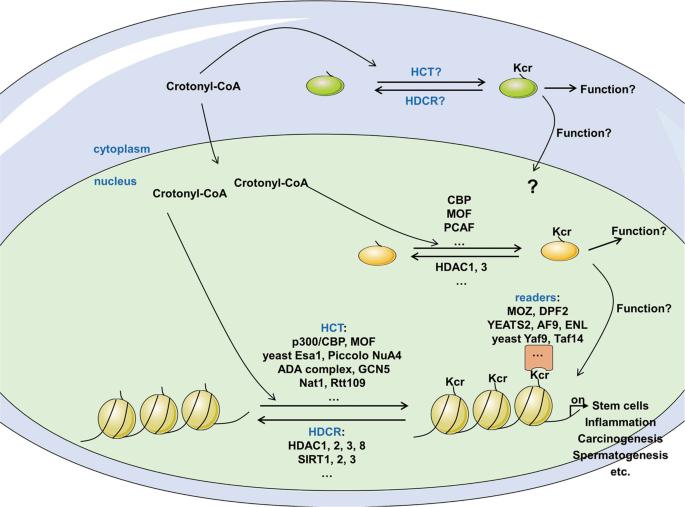Crotonylation Analysis Service
In 2011, a novel protein modification known as crotonylation was unveiled, specifically targeting the lysine residues of histones. It plays a significant role in crucial biological processes, particularly in the regulation of gene expression. Creative Proteomics stands as a leading provider, excelling in delivering top-tier crotonylation analysis services, which include identification, quantification, and characterization, aiming to provide valuable insights that enhance and advance your protein research endeavors.
What is Crotonylation
Crotonylation modification is a modification resulting from the transfer of a crotonyl group to histone amino acid residues by histone crotonyltransferase (HCT) using crotonyl coenzyme A (Cr-coA) as a substrate. Similar to other types of PTM, crotonylation is a reversible modification with important functions such as promotion of gene expression and regulation. Among protein crotonylations, the most common is lysine crotonylation, which has been found on a large number of non-histone proteins through further research.

Fig.1 Schematic of crotonylation (Jiang, G. et al., 2021)
Unlike well-established modifications like phosphorylation and acetylation, the recognition of lysine crotonylation emerged in 2011. This modification is predominantly observed on histones within transcriptionally active chromatin regions and holds close ties to reproductive regulation. The introduction of negatively charged crotonyl groups renders histones less electronegative, leading to looser binding to negatively charged DNA. This, in turn, facilitates the interaction with transcription factors. Recent research has unveiled a novel crotonylation reader, providing a foundational understanding of unraveling the biological functions of crotonylation modifications.
Applications of Crotonylation Analysis
Crotonylation is mainly distributed in active gene promoter regions, or potential enhancer regions, and is involved in a variety of biological processes including translation initiation, RNA splicing, DNA damage and repair, cell cycle and amino acid metabolism. It has been found to be closely related to cancer metabolism, DNA damage repair, stem cell differentiation, reproductive regulation, and depression. Crotonylation research has a wide range of applications, for example:
Epigenetic
Histone crotonylation modifications have been shown to have functions such as maintaining the activity of sexual chromosome-associated genes in mid-meiosis.
Reproductive Development
Crotonylation modifications are closely related to reproductive regulation. Strong labeling of histone Kcr is observed in post-meiotic male germ cells and is associated with X-linked haploid cell-specific gene expression programs.
Cancer Research
Crotonylation modifications are involved in a variety of signaling pathways and nuclear-associated processes, which are closely related to the tumorigenic process.
Our Service
Creative Proteomics has advanced protein detection technologies and can provide customized services to researchers and scientists to help them reveal the complexity of PTM using powerful mass spectrometry technologies. Our services are thoughtful and detailed and the process of crotonylation analysis service is as follows:

Fig.2 Crotonylation analysis workflow
- Sample Preparation
Proper extraction and preparation of proteins from biological samples to ensure preservation of crotonylated proteins. - Crotonylation Enrichment
Enrichment techniques are employed to isolate crotonylated proteins or peptides. This step is crucial as crotonylation modifications are often present in low abundance compared to unmodified proteins. - Detection
WB, protein microarrays and LC-MS/MS are powerful tools for the identification and quantification of crotonylated peptides, and they provide detection information that facilitates a comprehensive analysis of crotonylation. - Bioinformatics Analysis
Advanced bioinformatics tools are used to analyze data, identify crotonylated peptides, and map these modifications to protein sequences. - Result Delivery
After professional data analysis, we deliver results quickly and consistently.
Creative Proteomics brings a wealth of experience to the field of protein research. Our comprehensive services and products cover the entire spectrum of utilizing suitable and efficient gateways. Utilizing our proprietary platform, we have successfully implemented many proteomics research projects. If you are interested, please contact us for more information and a quote.
Reference
- Jiang, G.; et al. Protein lysine crotonylation: past, present, perspective. Cell Death & Disease. 2021, 12(7): 703

